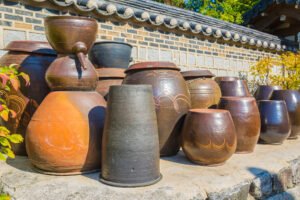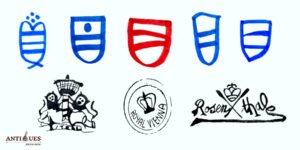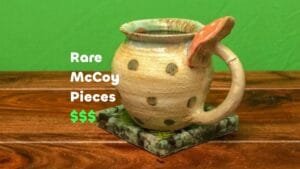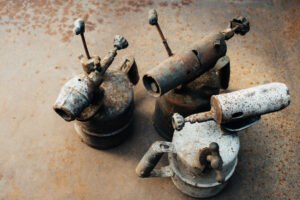Do you own a Goldscheider pottery piece? Then there are chances that it’s a historical gem that’s potentially worth thousands, like the 19th Century Goldscheider figure that sold for $5,000! So, how do you know if your Goldscheider piece is real and valuable?
This visual guide will help you spot real Goldscheider manufacturer marks, location marks, and artist signs and distinguish them from fake marks. Unlock the history of these antiques and their real age to value marked Goldscheider pieces rightly!
Brief History of Goldscheider Porcelain Company

Since its inception in 1885, the Goldscheider Porcelain, one of Austria’s leading terracotta & faience mills, faced quite a turbulent history as follows:
- 1885: Friedrich Goldscheider, a Bohemian immigrant, founded the Goldscheider Porcelain Manufactory in Vienna, Austria. He later initiated more faience branches in Paris, Leipzig, Berlin & Florence.
- 1920s – 1930s: Friedrich’s sons Walter and Marcel Goldscheider took over the business and introduced more Art Nouveau & Deco designs. Many local artists joined the company during this time.
- 1938: The Goldscheider family had to leave their factory and flee Austria amid Nazi persecution.
- 1940s: Walter Goldscheider founded Goldscheider Everlast Corporation in Trenton, New Jersey, The company made many influential pieces in faience, terracotta, and bronze. Marcel established a studio in Hanley, Staffordshire, England.
- 1953: Walter sold the company’s license to Cartsens (a West German pottery manufacturer). This company later made red terracotta figurines and wall masks under its new subsidiary, the “Kunstkeramische Manufaktur Goldscheider GmbH.”
- 1987: Friedrich’s grandson, Peter Goldscheider, tried to revive the brand by issuing some porcelain items in Stoob, Austria. However, he closed this venture in 1994 due to low sales.
How to Identify and Date Real Goldscheider Marks
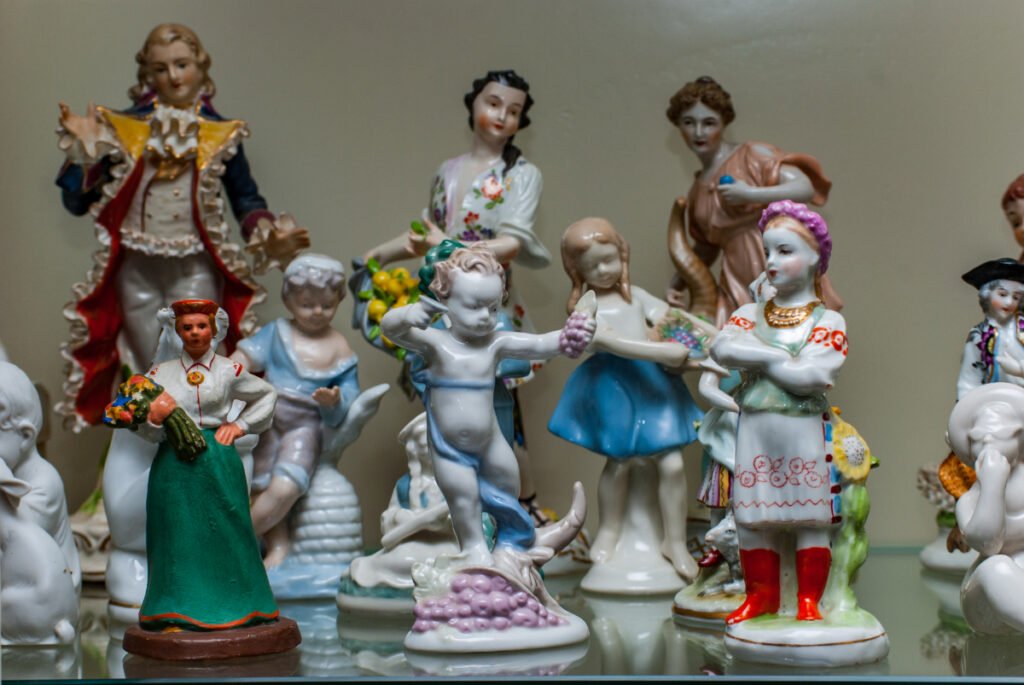
You can identify and date vintage Goldscheider ceramics with the help of three types of marks found on their base or inner walls – brand trademark, location mark, and artist signs.
These marks may have aging signs, like blunt corners, yellowish letters, and stains. Some of the later 1950s painted marks might also have faded, uneven, or thick strokes. Still, each type of mark can help you track the age of your Goldscheider piece!
1. Brand Marks/Trademarks
Much like other local German pottery companies, Goldscheider had its standard black factory mark. The earliest mark, circa 1885, looked like a face, with an ‘M’ shaped motif with “Goldscheider” etched above and “Porcelain” below it.
However, the company didn’t stick to a single logo and updated it per their design language and machinery each year. For example, the 1930s logos had a cursive “Goldscheider Wien” mark with raised textual logos and transparent, red, or green glazing.
Here’s a handy year-wise date chart to age Goldscheider pottery based on its different trademarks using hand-drawn references:
| Goldscheider Brand Marks | Active Years | Estimated Age |
 | 1885 – 1917 | 100 – 118 years |
Incised or Impressed Mark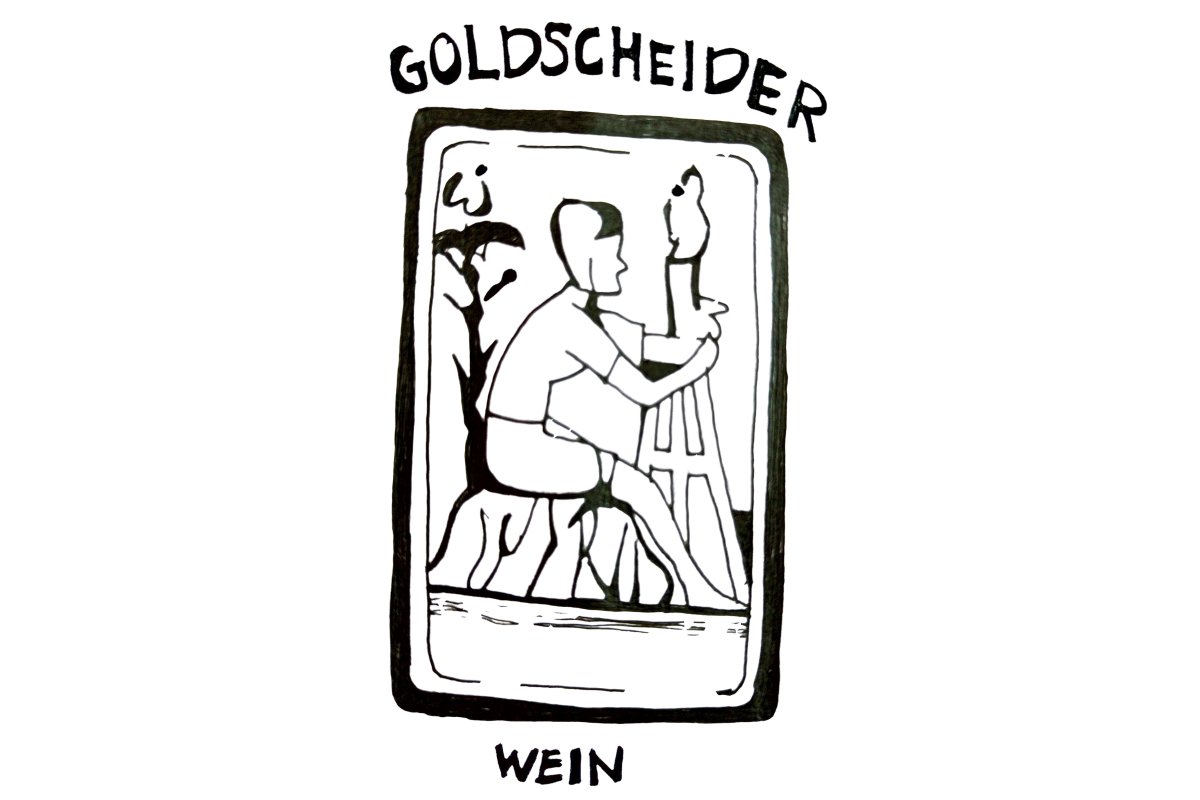 | 1900 – 1920 | 103 – 123 years |
 | 1937 – 1941 | 82 – 86 years |
 | 1940s & Above | 80 years & Above |
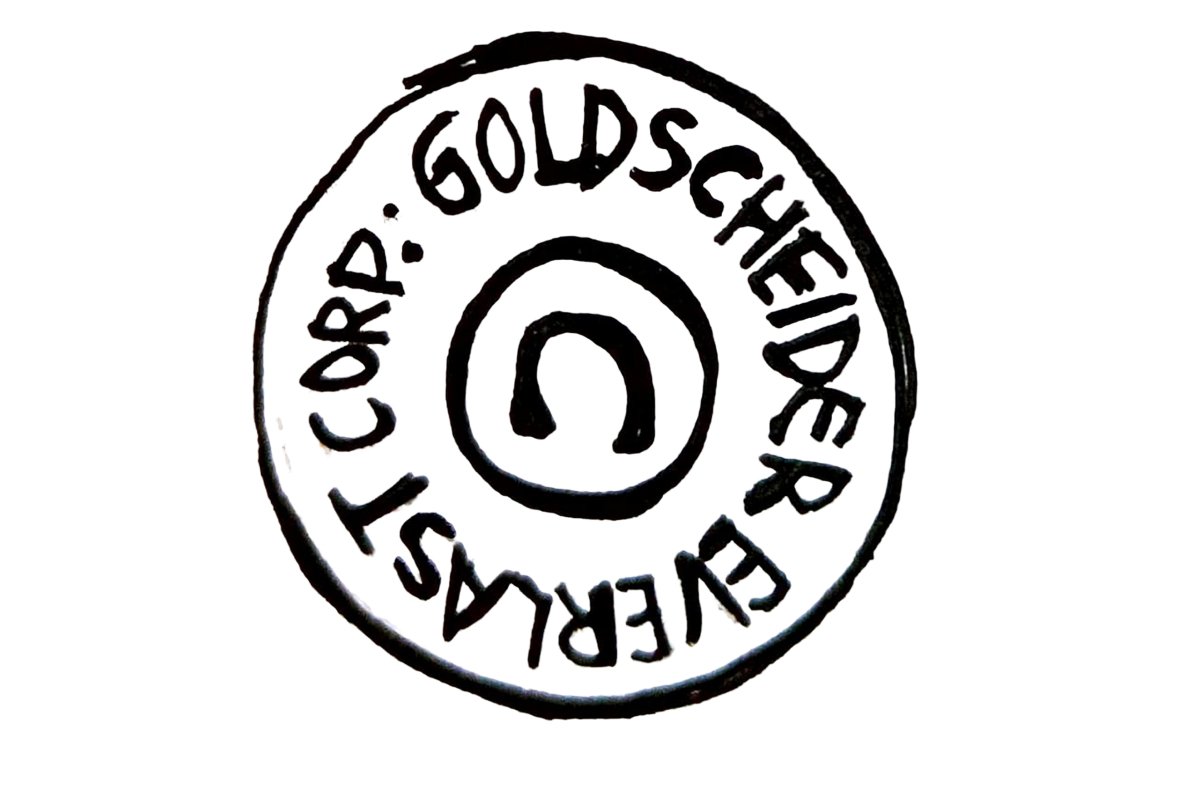 | 1948 Goldscheider Everlast Mark | Over 75 years |
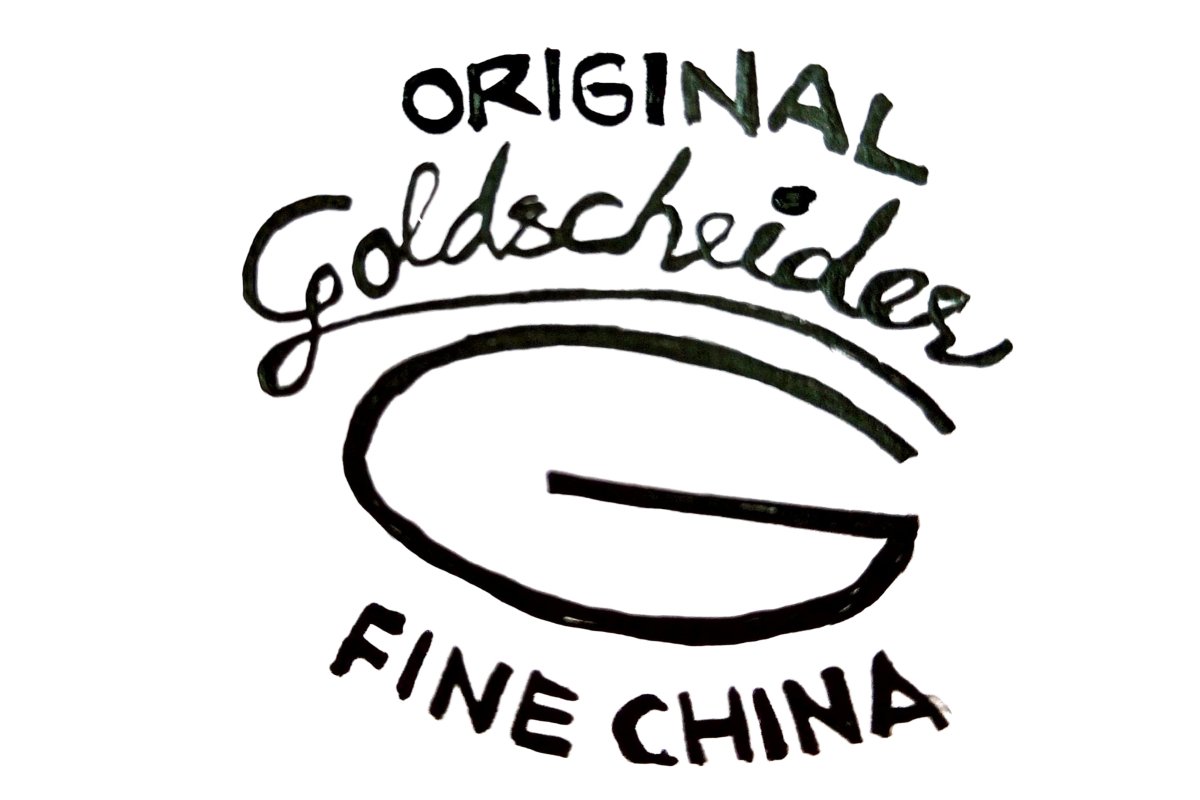 | 1960 & Onwards | Around 60 years |
 | 1960 & Onwards | 60 years & Above |
In addition to the marks, you can date your Goldscheider porcelain pieces via simple visual design features. Here’s how!
- 1885 – 1910: Goldscheider took clues from the local Art Nouveau movement and imitated its feminine designs, exaggerated shapes, and hand-painted floral and animal patterns. Popular collectibles include unglazed figurines and wallplates.
- 1920 – 1930s: Goldscheider Porcelain switched to bright-colored and geometric Art Deco figurines, each with metallic glossy accents and elongated bodies.
- 1940 & onwards: You can identify these war-era American figurines with their simple and streamlined designs, often with cheaper glazes instead of paint. Also, they have realistic human-body proportions and blunt forms, partly due to material shortage.
2. Location Marks
As mentioned earlier, the Goldscheider factory shifted its studios from Austria to the USA and finally to the UK, changing the porcelain’s manufacturing units and location marks.
The earlier Goldscheider location marks were stamped marks. But the later ones, mainly from Europe, might use paints and paper labels. So, they look flat and relatively uniform.
In the old 1900s, die-cast Goldscheider marks were raised and rounded with a fired black, blue, or brown glaze for visibility. Check all the location marks references below.
| Goldscheider Porcelain Location Marks | Country Name |
 | West Germany |
 | Germany (1900s) |
 | Vienna |
 | United States of America |
 | Austria (1900s Mark) |
 | Austria (1990s Mark) |
If your Goldscheider figurine has any different markings, like a ‘Made in Japan’ mark, it can be a fake piece. Click its pictures and e-mail me for identification.
3. Goldscheider Artist Marks
The Goldscheider Porcelain Company worked with many ceramics artists from 1885 to 1994. Some popular artists are Walter Bosse, Demètre Chiparus, Benno Geiger, Josef Lorenzl, Ida Meisinger, Michael Powolny, Susi Singer, and Arthur Strasser.
After the Goldscheider factory started adding artist marks in the 1910s, most artists distinguished their work with their unique artist monograms and signs on the pottery.
These signs were simple; just the artist’s name, initials, or monograms with a clear black or dark blue glazing on top. Here are some of those:
| Goldscheider Artist Marks | Artist / Co-Brand Name |
 | Rudolph Thiele |
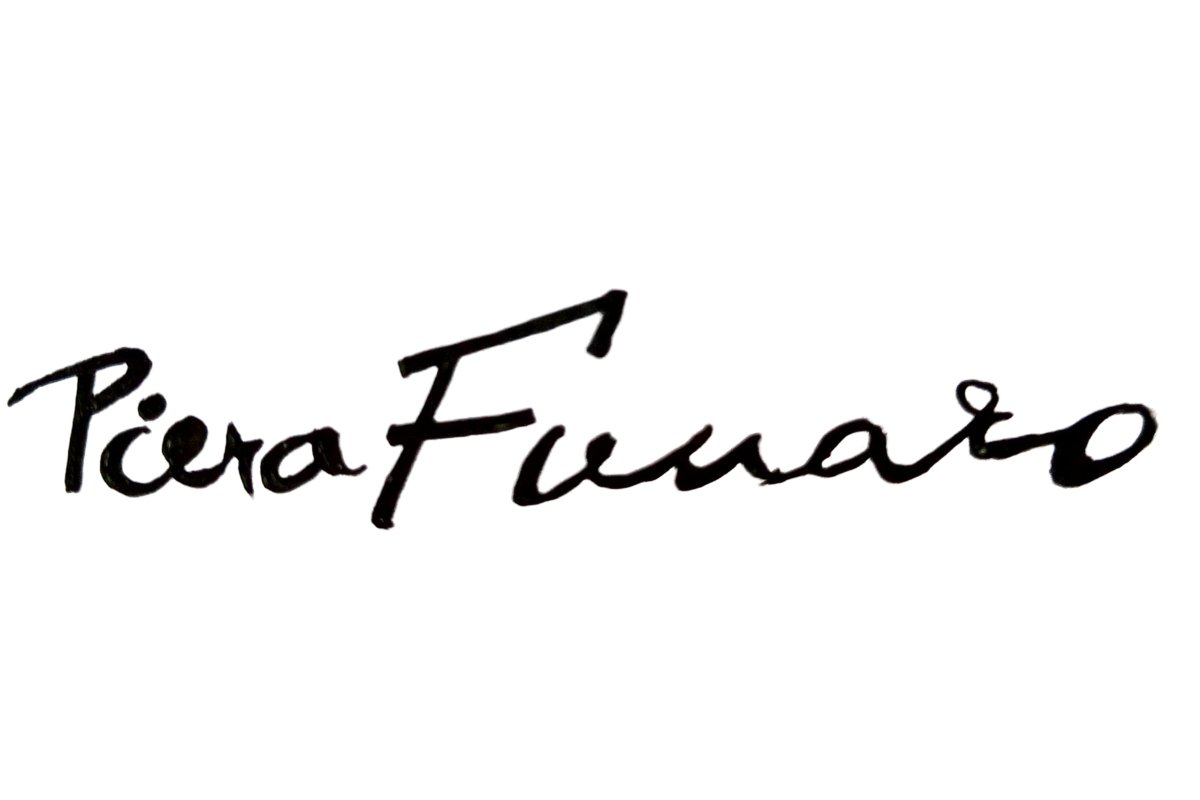 | Piera Funaro |
 | Myott Son & Co, England |
 | Peggy Porcher |
 | Josef Lorenzl |
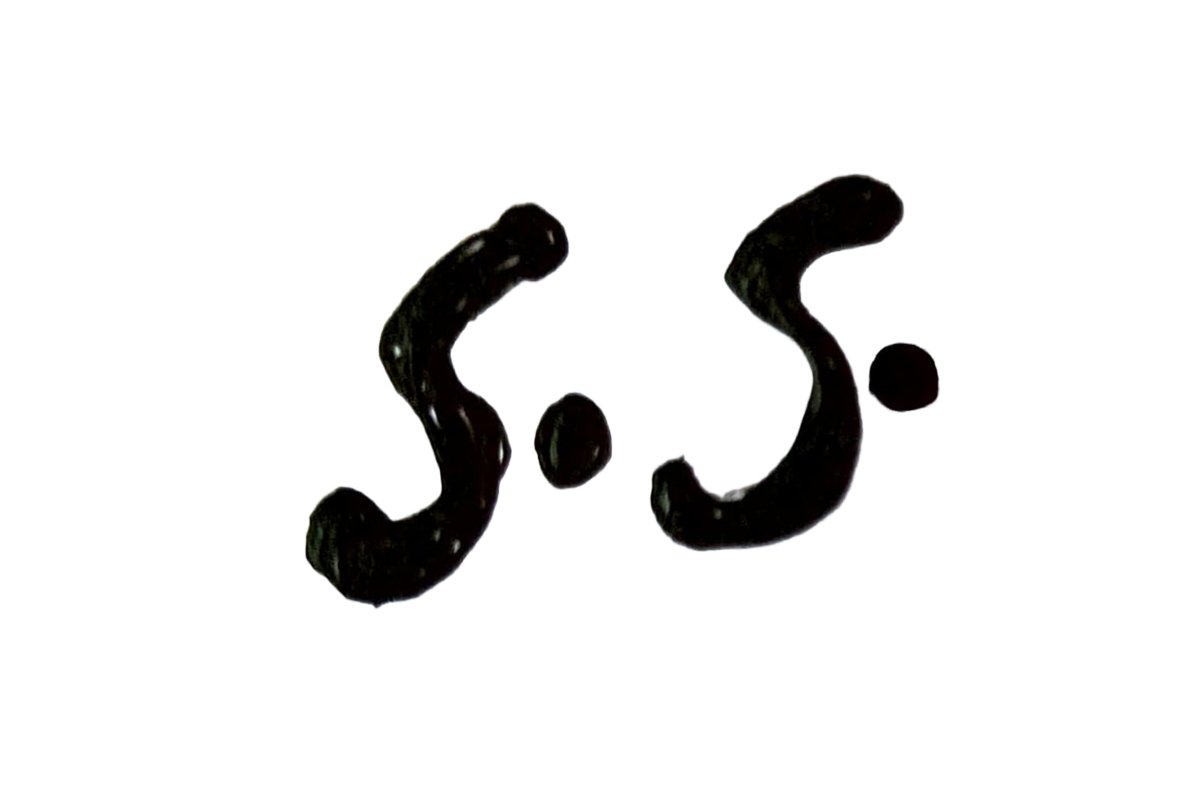 | Susi Singer |
All the above Goldscheider ceramics artist marks are completely hand-drawn, only for easy identification.
Spot Fake Goldscheider Porcelain Marks
Due to its popularity and collectible value, Goldscheider Porcelain has always been on the radar of antique scammers due to its easy-to-copy, glazed marks. So, there is a high chance that a Goldscheider pottery piece with similar trademarks is reproduced or fake.
But these FAKE marks aren’t 100% the same; they have wrong spellings, font variations, or misplaced details, as follows:
- Sharp and uniform printed marks with visible seams and machine cuts, unlike real raised marks
- Mis-spelled words like ‘VIENA’ for ‘VIENNA,’ ‘GERMAN’ for ‘GERMANY,’ etc.
- A copyright ( ©) or registered trademark symbol (®) next to the logo
- Bright yellow, golden, or green glazing unlike the blue, black, or brown glaze
You can also simply compare a piece in question with a real Goldscheider piece of the same era or pattern to check if the marks look similar or not.
Vintage Goldscheider Porcelain Value Guide

The value of commonly found Goldscheider porcelain pieces can range from $20 to as high as $500, but old and rare marked pieces can be worth up to $1,000 – $5,000 or more at an online or offline auction.
You can estimate the value of your Goldscheider porcelain piece by analyzing the following factors:
1. Craftsmanship Quality & Design
Goldscheider porcelain pieces with extraordinary craftsmanship will hold greater value than simple carved pieces. Besides, some specific designs, like vibrant Art Nouveau or Art Deco pieces with historical revivalism, are more popular and valuable.
2. Popular Artist or Modeler
A Goldscheider pottery piece designed by renowned artists or sculptors is more desirable for collectors. So, always look for the artists’ distinctive pottery features as well as signatures or monograms on the pottery.
3. Condition
The closer to its original perfect condition a Goldscheider piece is, the more valuable it is likely to be. So, assess the condition of your piece. It’ll be less valuable if it has major chips, cracks, fading, heavy repairs, or unprofessional restoration signs.
4. Rarity
Rare Goldscheider porcelain from limited or short-lived series tends to be more valuable. For example, large old Goldscheider figurines with rare elaborate historical elements and intricate designs are most valuable, worth up to $5,000.
Here are a few examples of such rare Goldscheider figures and their values:
- A 19th-century, life-sized, North African boy Goldscheider figure fetched $5,000 at a Sotheby’s Auction.
- A Goldscheider, Art-Nouveau-styled, signed ‘Butterfly Dancer’ figurine was sold for $2,500 at a recent DuMouchelles Auction.
- A rare 1890s Goldscheider Terracotta Figure ’ist Es Wahr’ (Is It True) fetched $1,725 at Tiroche Auctions.
In contrast, common Goldscheider items like plates and bowls fetch around $100 – $600. Here’s a quick Goldscheider price guide for common porcelain items:
| Porcelain Type | Estimated Value |
| Wall or Serving Plates | $50 – 400 |
| Figural Bowls | Less than $2,000 |
| Wall Mask | $50 – 600 |
| Plaque | $100 – 1,500 |
As we saw, you can identify real and valuable Goldscheider: porcelain based on the brand, location, and artist marks found on its base or inner walls. Most of these marks would be embossed, but some might have a transparent or blue glaze, as on the old Meissen marks.
Note: This article is intended for informational, educational, and entertainment purposes only. Some images are illustrative and may not represent actual brands, products, or related entities. All trademarks, product names, brand logos, packaging, and other intellectual property referenced remain the exclusive property of their respective owners. Any brand mentions or references are provided solely for descriptive and educational context and do not imply any formal or commercial association.




